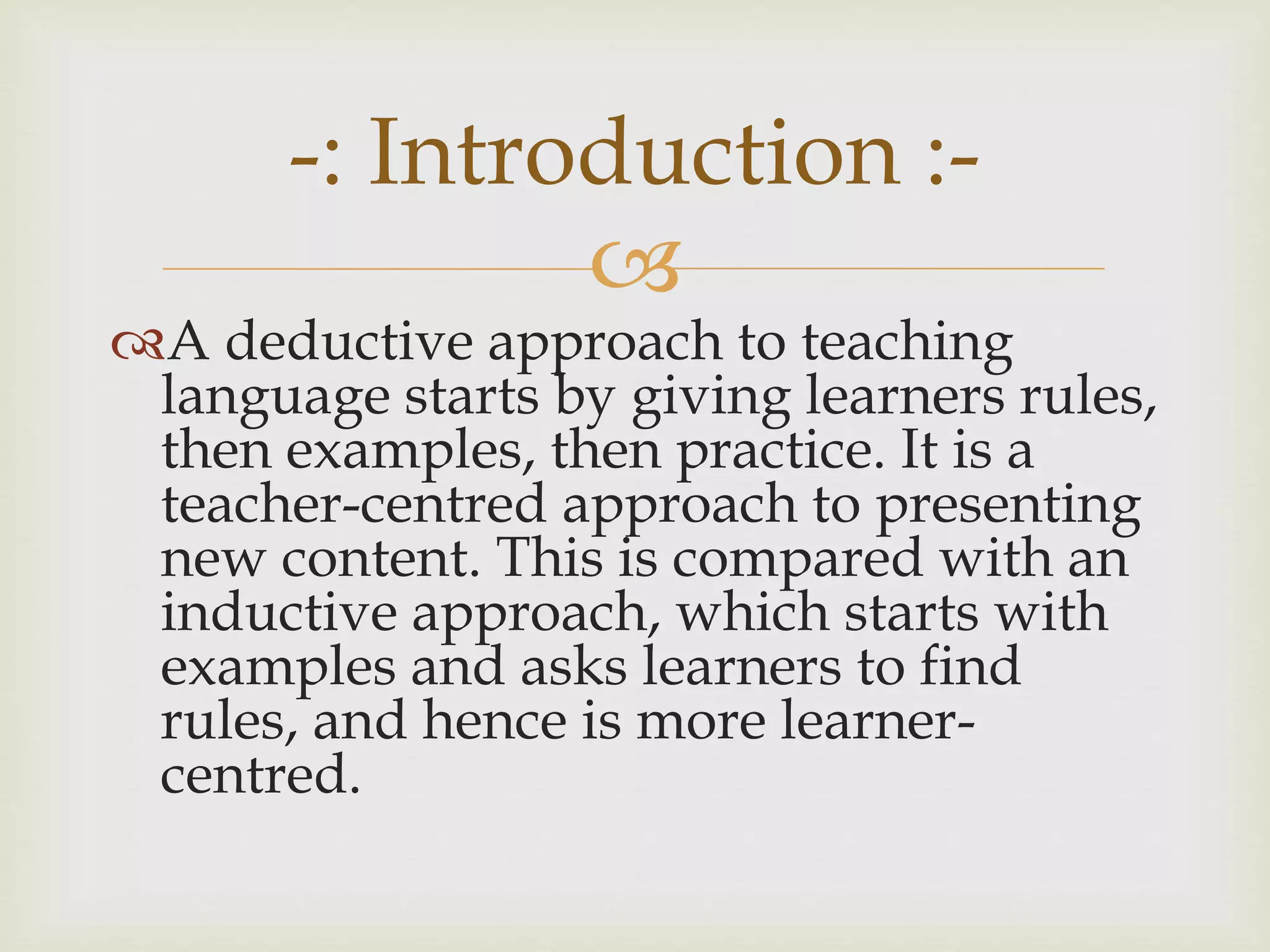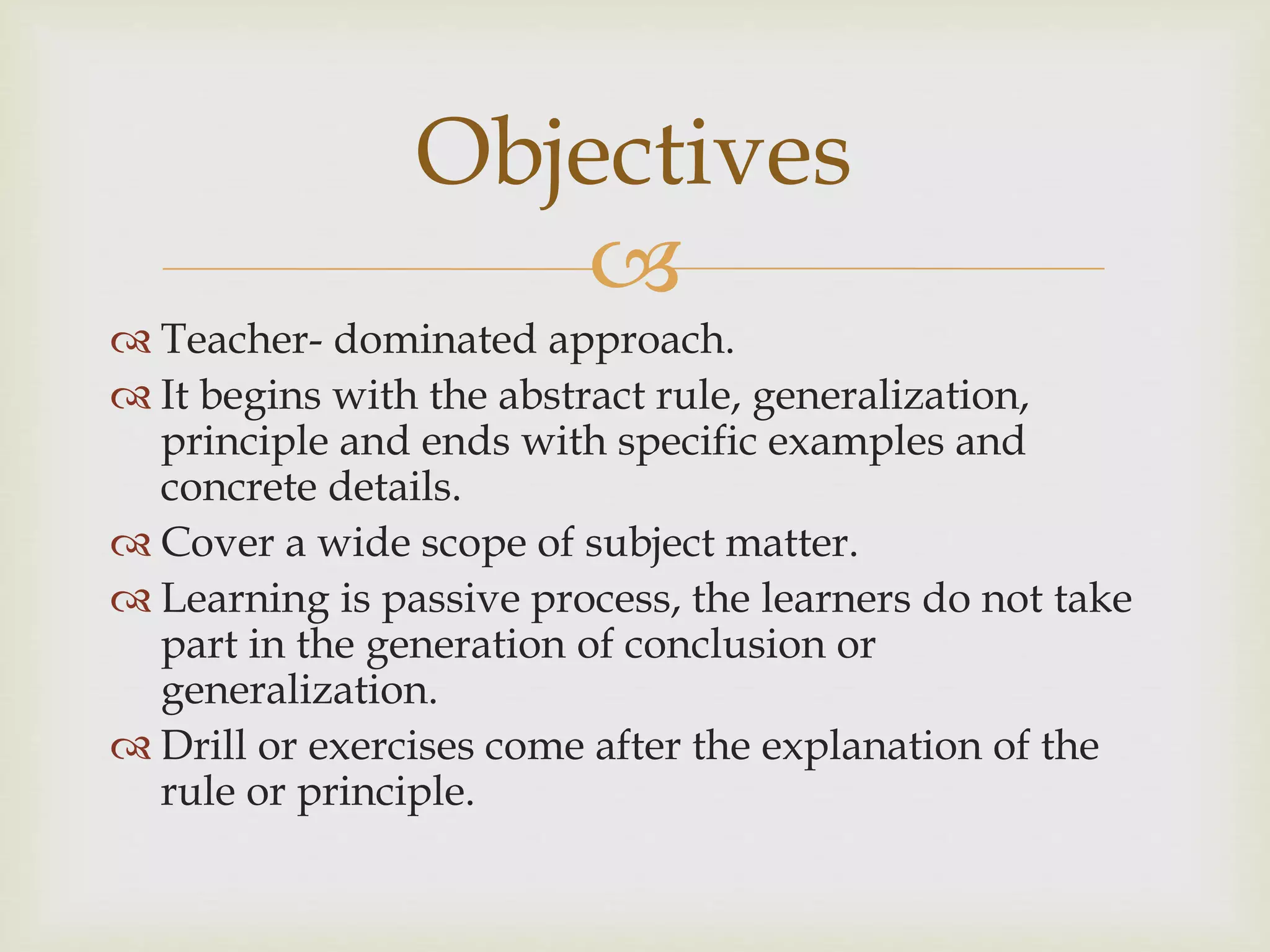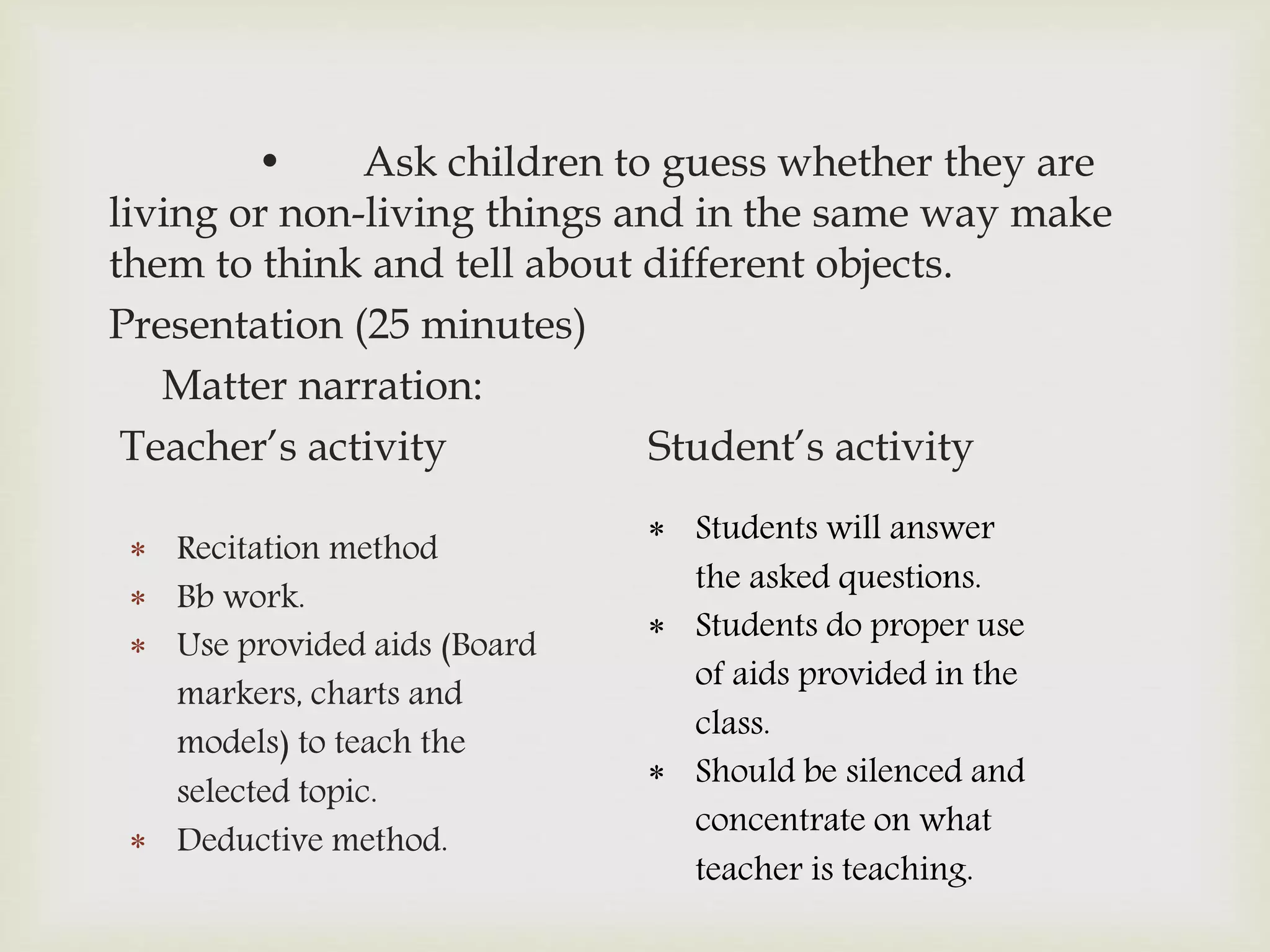The document describes a deductive approach to teaching language. It begins with presenting rules to learners, then examples of those rules, and finally practice applying the rules. This is a teacher-centered approach compared to an inductive method where learners derive rules from examples themselves. The deductive approach dictates grammatical structures and rules to students first before having them apply the rules in examples. It starts with presenting a rule followed by examples of that rule.













